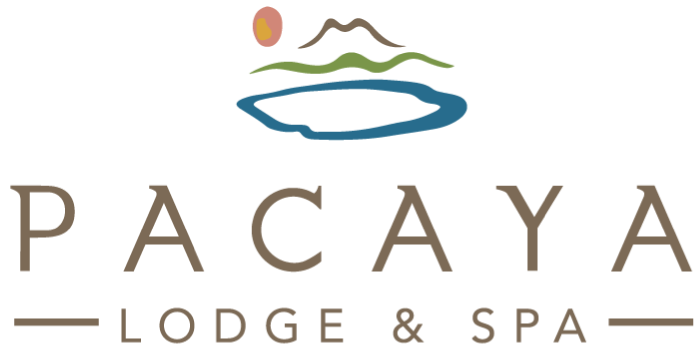Must-See Cultural Sites in Nicaragua
Exploring important cultural sites in Nicaragua is key to better understanding the nation’s extensive history and rich culture during your visit. Pacaya Lodge and Spa offers many different packages, tours, and day excursions to significant Nicaraguan sites. Check them out below!
- Los Pueblos Blancos
Los Pueblos Blancos, or White Towns, are known for their strong pre-Columbian traditions, picturesque Spanish architecture, and unique artisanal craftsmanship. Traditional whitewash made from water, lime and salt is used on all the houses, making Los Pueblos Blancos a pristine landscape of white buildings. The series of rural communities are located around Granada and Masaya and consist of the small towns: Nindiri, San Juan de Oriente, San Marcos, Niquinohomo, Masatepe, Catarina, Diria and Diriomo. Each town manufactures town-specific artisanal handicrafts ranging from hammock-making to stone carvings to leather work. Pacaya Spa and Lodge provides opportunities to visit the towns of Catarina and San Juan de Oriente.
Catarina is renowned for its beautiful nurseries filled with a diversity of local flowers that travelers and locals alike come to buy. A botanist’s dream, you can find everything from small ornamental plants to large palm trees to unique flowers that thrive in Catarina’s higher altitude and cooler climate. People visit Catarina not only for its plants, but also for the vista from El Mirador de Catarina. From here, you get wonderful views of the Apoyo Lagoon, Granada, Lake Nicaragua, and Mombacho Volcano.
Sitting upon clay deposits from past volcanic activity, San Juan de Oriente has been a center for ceramics since pre-Colombian times. Today, San Juan de Oriente is still home to renowned ceramic workshops, cooperatives, and artists. Throughout town, you can find an array of vases, bowls, and other pottery pieces glazed with beautiful, intricate patterns.
2. Masaya
Masaya, also known as “The Cradle of Nicaraguan Folklore,” is the cultural heart of Nicaragua. As a cultural destination, traditional dance, music, street theater and colorful processions are common in Masaya. The city is also famous for its large Mercado de Artesanías, which is located inside a 1900s structure that used to be the mercado viejo, or old market. The market has been revitalized and set as a tourist spot where visitors can find local handicrafts.
3. Granada
With a rich colonial heritage, Granada is historically one of Nicaragua’s most important cities. Granada was founded in 1524 by Francisco Hernández de Córdoba and ostensibly became the first European city in mainland America. One of the oldest and best preserved cities in the New World, Granada features a plethora of Spanish colonial architecture as well as Moorish and Andalusian-influenced buildings. A visit to Granada with Pacaya Lodge and Spa will include a horse-drawn carriage over cobblestone streets to popular attractions such as the San Francisco Museum, vibrant city market, churches, and monuments. Your private guide will relate Granada’s storied past and introduce you to the best shopping and dining available in the bustling city.
4. Zapatera and El Muerto Islands
Zapatera is an archaeological site where many statues, petroglyphs and pottery were found that suggests the area was an important pre-Columbian ceremonial centre between 800 and 1350 CE. Discover the island’s history and explore ancient archaeological sites with local experts who know the island’s best secrets and folklore.
5. Isla de Ometepe
Another archeological hotspot, Ometepe Island is the place to learn about pre-Columbian history. Ceibo Museum on Ometepe has a collection of more than 1500 archaeological pieces including petroglyphs, ancient native tombs, tools, spearheads, ceramics, and more.
6. Managua
Managua’s rich political history, architectural features, and recent modernization makes it a must-see for visitors. As Nicaragua’s largest city and capital since 1852, Managua is Nicaragua’s main political, social, cultural, educational and economic hub. On a tour with Pacaya Lodge and Spa, guests will notice the contrast between Old Managua and the emerging “new” Managua city. A series of earthquakes, hurricanes, and economic troubles have harmed many parts of the city in the past. Now, newly developed governmental buildings, galleries, museums, squares, promenades, monuments, and commercial spaces have reinvigorated Managua’s downtown. Managua’s historical center located on the shores of Lake Xolotlán has been partially rebuilt and refurbished. There, you can find important buildings that survived the earthquake of 1972 such as the Catedral de Santiago and the National Palace which houses the National Archive, the National Library, and the National Museum.
7. León
León rivals Granada in the number of historic Spanish colonial churches, monuments, and historical places. León was previously the capital of Nicaragua in colonial times, and for some years the capital shifted back and forth between León and Granada before Managua was named Nicaragua’s capital. Home to Nicaragua’s largest universities, museums, and the largest cathedral in all of Central America, León remains one of Nicaragua’s most important cities. An excursion to León with Pacaya Lodge and Space will include visits to the Ortiz-Gurdian Museum, which houses a wide range of sculptures and paintings and the Rubén Dario Museum, to learn about Nicaragua’s most famous poet.
Click here to read more about Pacaya Lodge’s tours & excursions, and make sure to check out Pacaya Lodge’s travel package options.
Trackback from your site.




